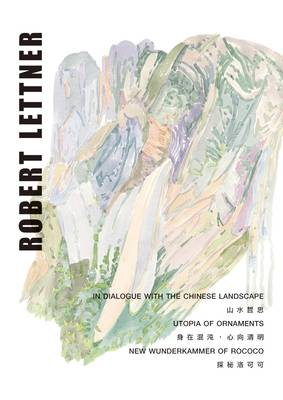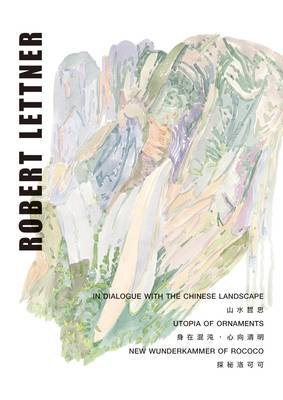
Door een staking bij bpost kan je online bestelling op dit moment iets langer onderweg zijn dan voorzien. Dringend iets nodig? Onze winkels ontvangen jou met open armen!
- Afhalen na 1 uur in een winkel met voorraad
- Gratis thuislevering in België vanaf € 30
- Ruim aanbod met 7 miljoen producten
Door een staking bij bpost kan je online bestelling op dit moment iets langer onderweg zijn dan voorzien. Dringend iets nodig? Onze winkels ontvangen jou met open armen!
- Afhalen na 1 uur in een winkel met voorraad
- Gratis thuislevering in België vanaf € 30
- Ruim aanbod met 7 miljoen producten
Zoeken
Robert Lettner
In Dialogue with the Chinese Landscape / Utopia of Ornaments / New Wunderkammer of Rococo
Florian Knothe, Harald Kraemer
Paperback | Engels
€ 30,95
+ 61 punten
Omschrijving
Published in conjunction with three Robert Lettner (1943-2012) exhibitions staged across Hong Kong in 2017, this volume surveys artworks from the Austrian artist's long career from the 1960s until his death, focusing specifically on his interest in representing--both figuratively and in abstract form--landscapes. It is the first publication of his work to appear in English and Chinese. Lettner immersed himself in the natural world, vividly depicting his vision on paper--whether representing the vast ocean, the sun's warmth or an endless line of mountains and clouds. As an influential artist in Central Europe, Lettner also was attracted to traditional art forms from the East, particularly the shan shui philosophy of landscape painting. He explored the artistic world through a language that combined the Chinese aesthetics of the 'void' and watercolour landscapes. Lettner's distinctive ornamental forms were based, in part, on his research and improvisation of the Mustard Seed Garden Manual of Painting (1679-1701). Based in Austria, Lettner devoured Eastern materials and techniques through the later seventeenth-century publication and his oeuvre was visibly influenced by his intense study. Fascinated with brush strokes and watercolours, it was the void more than constructed landscapes that left its mark on Lettner's paintings, and add an arguably more abstract and modern element to his well-versed vocabulary. This foreign influence acknowledged, it remains worth noting that Lettner--however fascinated with the Chinese landscape--continued to use his own palette of colours and represented with his pastels; for example, the summer light and nuanced intensity he would have found present painting in Southern Europe. His green-on-green landscapes are, without exaggeration, more of a play on the often monochromatic Chinese variant and, still, they are hybrid at best. The integration of contemporary art and traditional culture is an inevitable trend in a globalising world. Lettner retained the beauty of Western landscape paintings while incorporating the essence of Eastern art; he sought to develop dialogues between forms of Chinese and Western paintings. (1943-2012),, --,,,,,,, --,,,, « »(1679-1701),,,,,, --,,
Specificaties
Betrokkenen
- Auteur(s):
- Uitgeverij:
Inhoud
- Aantal bladzijden:
- 80
- Taal:
- Engels
Eigenschappen
- Productcode (EAN):
- 9789881902467
- Verschijningsdatum:
- 27/09/2017
- Uitvoering:
- Paperback
- Formaat:
- Trade paperback (VS)
- Afmetingen:
- 208 mm x 295 mm
- Gewicht:
- 340 g

Alleen bij Standaard Boekhandel
+ 61 punten op je klantenkaart van Standaard Boekhandel
Beoordelingen
We publiceren alleen reviews die voldoen aan de voorwaarden voor reviews. Bekijk onze voorwaarden voor reviews.











